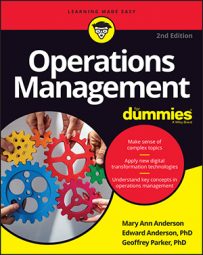Managing outsourced projects is almost always more difficult than people expect. The learning curve — for operations managers, your firm and the supplier — that goes into the making of a smooth, successful relationship is often very difficult.
These are some ways to get to the facts about what outsourcing can and can’t do and how to overcome some common hurdles.
Common myths about outsourcing
The conventional wisdom about managing outsourcing relationships involves a number of misconceptions, particularly that outsourcing makes managing the outsourced component easier and cheaper and doable with less management and personnel.
The following are some particularly common outsourcing myths:
External suppliers reduce the number of personnel working on your project. This is false. You will have fewer people working directly for you, but you’ll have to hire a number of employees to coordinate the outsourced work. The supplier has to do the same. And there are still people who need to do the actual work. In the end, the number of people working on the project will increase.
Managing an external supplier is easier than managing internal suppliers. You may think this at first, when the supplier wants your business. But, after the initial honeymoon, you’ll soon realize that your firms may not have the same goals and that you don’t have the same control over people in other firms that you do in your own firm. Only the CEOs of both firms can resolve disagreements.
Of course, you can always fire the supplier, but you’ll end up harming your own firm because you won’t have anyone to supply your component. The end result is that you have to manage external suppliers much more by persuasion than you would within your own firm.
You need fewer middle managers and can flatten your organization. It’s only going to look like your organization is flattening. The people who will manage these outsourced products, components, or services need to manage uncertainty, persuade and cajole, and hold perhaps hundreds of people accountable.
This sounds very much like the job description for a middle manager. The only difference is that the people being managed aren’t at your firm but at the supplier. Moreover, there are counterparts to your supplier management personnel at the supplier. So rather than flattening the organization, you’ll probably add at least one layer of management!
Going into a partnership believing that everything will be easy is a recipe for failure. But take heart; we’ve worked with dozens of firms that have great outsourcing partnerships. How did they do it? By taking the time, being patient, and setting realistic expectations.
Bridge the gaps
A number of issues can make managing an outsourcing partner especially difficult. Here are some of the challenges you need to address when developing an outsourcing relationship:
Culture: Nations have their own distinct cultures. Initially, this can lead to many mistaken assumptions and crossed signals. A yes answer from a person from some nations may not indicate agreement but merely that she understands what you’re saying. Other cultures tend to be very abrupt and blunt, which can be interpreted as anger or frustration when it’s nothing of the sort.
In short, expect to be surprised at the number and variety of misunderstandings that occur when working with different cultures. The one bright side to this is that you’ll get better at intercultural communication after a while, especially if you continue working with the same counterpart. And learning about new people, places, and customs can be one of the joys of working across national borders.
Geography: Studies confirm that trying to coordinate with people in different time zones is difficult. For example, you’re likely to have only a one- to two-hour window of overlapping work time each day to communicate by phone between North America and Asia. E-mails aren’t any different because they just sit overnight before you can read them.
In such situations, they may experience up to a 12-hour time lag each way, so resolving even a simple problem by e-mail often takes a day.
Industry: Different industries have different cultures as well. For example, one automotive firm tried to outsource some of its electronic control modules to a well-respected consumer electronics contract manufacturer. However, the contract manufacturer came from an industry in which high quality for its products was 99 percent good.
The supplier had difficulty reaching automotive standards of reliability, which are much higher, especially considering that a typical car has about 3,000 parts, and even if only 1 percent of the parts are defective, that means that 30 parts aren’t working, which is likely to cripple the machine. In short, if your suppliers come from a different industry, don’t make the assumption that they understand your requirements.
Language: You’ll most likely be communicating with your suppliers in one language (such as English). Fortunately, most suppliers have this capability. However, if the supplier’s first language is not the same as yours, communication will be hard. Remember, you’re probably having a discussion with your counterpart at the supplier in the first place because of some misunderstanding or technical difficulty. Communicating technical information across languages can be particularly challenging.
One helpful trick in these situations is double-confirmation. When you finish communicating something or giving an instruction, ask your counterpart to repeat to you in his own words what he thought you were trying to tell him. This catches a lot of potential miscommunications.

